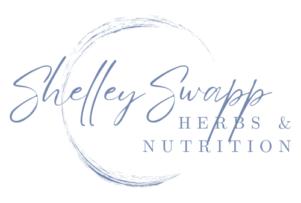Saffron has proven benefits for depression, PMS, Alzheimer’s disease.
our society is just beginning to have more meaningful conversations around removing the stigma around mental health.
Its also important to start talking about the many many resources available to help.
Since you’re here – It’s pretty likely you are interested in many of the natural resources available – so let’s talk Saffron!!

Diseases of the brain
For thousands of years in traditional Persian, Greek, Egyptian and Ayurvedic medicine Saffron has been highly treasured as a medicinal for “diseases of the Brain”.
Modern research is showing some pretty amazing support for this traditional use and its becoming more widely used as a support for depression (and Alzheimer’s – but I’ll save that for another post)
If you’re interested specifically in the research, I recommend you head over to HerbalGram’s outstanding write up on Saffron. Then come back here to learn how to use it.
For Depression
the most effective doses in studies are about 30 mg a day – some research involved dosing saffron at 15 mg twice a day, others used a single daily dose of 30 mg.
all of them showed significant improvement in depression symptoms over placebo. The research also showed saffron to be just as effective (or slightly more effective) than anti-depressant drugs with far fewer side effects.
Additional research showed that saffron helped reduce sexual side effects that are common with use of fluoxetine. More than 60% of women using Fluoxetine for depression experience low libido and other sexual function issues after starting the drug.
In several studies, both men and women reported significant improvements in sexual function when just 30 mg of saffron was taken daily. (placebo groups saw no improvements) Because of this research saffron is considered safe to take with fluoxetine.
Saffron and PMS
Saffron is also treasured for its capacity to give relief to women who suffer from PMS and PMDD.
In a double blind placebo controlled study 19 of the 25 women that participated in the saffron group reported at least a 50% decrease in severity of PMS symptoms! (Compare that to only 2 of 25 in the placebo group who reported decreases).
This is HUGE for PMS sufferers.
Doses were similar to the depression study – of 15 mg twice a day.
An additional study that utilized a combination of saffron, celery seed & anise showed a significant reduction in dysmenorrhea (painful periods). So benefits were seen for more than just moods.
Additional research has also shown Saffron:
~reduces delayed onset muscle soreness (meaning reduced soreness after strenuous exercise).
~Promotes weight loss by reducing the urge to snack by 50%
~benefits eye health in people with glaucoma and age related macular degeneration.
Who shouldn’t take Saffron?
Saffron has a really high safety profile when taken properly. however therapeutic use is NOT recommended during pregnancy (culinary use is fine)
the Maximum daily dose is around 1.5 grams (or 1500 mg which is way above the 30 mg dose used in most studies),
severe side effects have been noted when individuals ingest 5 grams of saffron at one time including miscarriage (which is why its not considered safe for pregnancy). Saffron is considered lethal at 20 G (that’s a lot of saffron )
Food As Medicine
The great news is that Saffron is also a wonderful culinary spice! If you missed my stories this week – I taught you how to make Saffron Cinnamon Tea.

Saffron Cinnamon tea
a pinch of saffron
1 cinnamon stick
1/2-1tsp of dried peppermint leaves (2 T if fresh)
1 cardamom pod (optional)
Cover and steep in just boiled water for 10-15 mins. Sweeten to taste
or cover and simmer on the stove top for 7 mins, sweeten to taste.

Saffron Rice is another one of our family’s favorite dishes –
When you use saffron as a culinary spice, you want to soak just a few of the threads in a small amount of warm water (or warm liquid) prior to using. This opens up the stigmas (the threads) and really allows you to get the most out of this delicate spice.
Tori Avery has a great basic recipe that’s easy to prepare and full of great tips. We love to make a full meal from it adding veggies and protein (Paela is my favorite way to prepare it).

Another great way to use saffron is in a smoothie.
Mango & Saffron go hand in hand and offer mood boosting & nutritional benefits.
This smoothie recipe above is really adaptable – we’ve added spinach, strawberries, swapped the coconut milk for almond milk and added chia seeds & cardamom. It seems to always taste good.
The trick is to let the saffron soak in 2 T of warm water for about 5 minutes before blending and using ripe mangoes.
(Special thanks to the great group of teens who kept taste testing for me on a rainy Friday afternoon)
If you are interested in using saffron to help with depression or PMS, supplementation can be really helpful.
It can be tricky to find a good product – HawaiiPharm has a great liquid extract and Life Extension has it in capsules
For best results remember herbs work best in formulas or in combination with other supportive herbs- so take a look at my posts on other natural resources for depression like Rhodiola, St John’s Wort and Vitamin D and if you haven’t already, download my free e-book on foods that help support brain health and mood.

